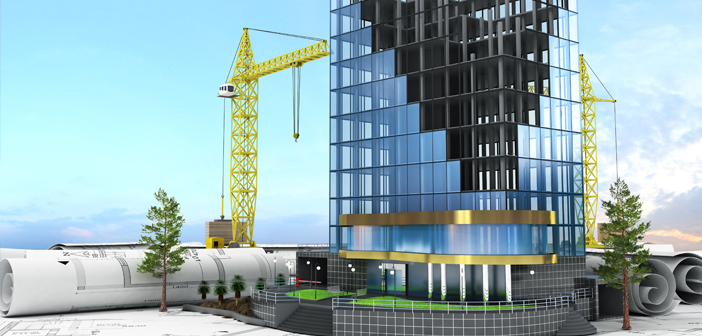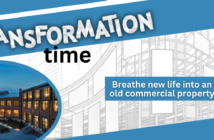Digitization is changing the timelines – and price tags – of hotel projects across the country.
By Satyen Patel
The construction industry, which has been slow to adopt innovative technologies and processes, is ripe for disruption. information technology (IT) penetration in construction is the lowest of all major sectors contributing to the United States’ gross domestic product (GDP). While its long-term benefits are notable, an IT deficiency often remains due to the fact that many technologies require a significant upfront investment. To deliver full benefits in the construction industry, IT must be simultaneously adapted across the entire architecture, engineering and construction (ACE) spectrum.
Due to a hesitation to change, the construction industry’s record on innovation, as well as its adoption of new technologies, tools and approaches, lags behind nearly every other occupational sector. In fact, according to McKinsey Global Institute’s report, Digital Economy: Trends, Opportunities and Challenges, the extent of digitization varies widely by industry, and construction was shown to be one of the least digitized sectors in the study.
Cost and schedule overruns are common and, in many cases, have become expected in construction projects. Despite the possibility to improve construction timelines and the bottom line through technology, it is apparent that many companies are hesitant to adopt revolutionary new digital systems. Many contractors share the belief that every project is unique and that introducing obscure new techniques and technologies are not only impractical, but will also negatively impact a project’s bottom line. As a result, the industry’s tendency has traditionally been focused on making improvements gradually. Fortunately, new advances in construction technology are allowing cutting-edge companies to go digital without upfront investments. Furthermore, the digitization of the construction industry is beginning to improve both the timelines and price tags of hotel projects across the country.
Digitization is changing everything. We’ve witnessed the replacement of address books, encyclopedias, maps and even currency with high-tech, digital options. Across the globe, technology has increased workflow and changed the way we do business. Traditional business models and processes are being altered across the construction industry as digital technologies that bring improved efficiency and scalability are adopted.
SHORTENING TIMELINES FOR SUCCESS
Digital technologies are unlocking the true potential of building information modeling (BIM). BIM is being used to plan, design, coordinate and engineer hotel projects at the earliest stages of the design process. Advances in BIM software integrate and connect every stage of design – from the architect’s original design to the creation of the building’s structural model. The model produced is an exact replica of the finished product with no measurement inconsistencies, which assures the structure is built exactly to measurement the first time. BIM modeling also shaves significant time spent on “rework.”
Robotic technology, coupled with improved building materials, allow mechanical, electrical, plumbing and fire protection (MEP/FP) rough-in crews to be introduced earlier in the process. Instead of waiting for the building to be complete (as done with wood, concrete and other steel structures), MEP/FP crews are able to get started as soon as one level is finished, often shaving several months off the project.
SLASHING COSTS AND IMPROVING THE BOTTOM LINE
Digitization also is allowing a number of activities that traditionally were performed onsite to gradually be consolidated and moved to more efficient, factory-like settings. Increasingly, lean techniques – including some of the most advanced robotics used in any industry – are being adopted by innovative construction companies, creating significant cost savings for users.
Many software programs allow for the use of pre-assembled components, allowing the on-site crew to erect the building in less time with fewer people, helping to reduce the overall budget. Digital integration allows components of a structure to be constructed remotely and easily installed on the job site. These prefabricated components are manufactured with great precision and can be transported to the job site with ease. These modern techniques are safer, deliver higher quality products, greatly reduce waste and, most importantly, reduce the cost and amount of time it takes to complete a project. This technology not only saves money, but it reduces the disruption time for surrounding streets and buildings – an important consideration in many urban infill projects.
Additionally, when BIM practices combine with lean manufacturing and pre-assembled components, project waste in both time and materials is greatly reduced. New technologies are delivering framing and other building materials pre-configured for electrical and plumbing and at the exact size required. This not only saves time, but it reduces the need for cutting, drilling and welding on site. Furthermore, costly on-site mistakes are almost completely eliminated when components are manufactured and even partially assembled before arriving on site.
At Prescient, we’ve taken technology a step further to include the entire process. The company’s ‘Digital Thread’ integrates design, engineering, manufacturing and installation to provide a comprehensive solution from concept to commercialization. Their light gauge steel building system, a patented system that makes building hotels better, faster and cheaper than before, makes this possible. For example, the platform integrates structural design, manufacturing and construction to cut weeks – even months – out of the hotel development process, allowing owners to begin realizing revenue faster than ever. Most importantly, it can positively impact time, money and risk at every stage of the project’s evolution, thereby delivering superior internal rates of return and significantly higher return on equity.
We recently worked with Hyatt Hotels to complete the Hyatt House Belmar in Lakewood, Colorado. It took 13 weeks to merely lay the concrete foundation, but once the foundation was complete, our unique system allowed the 80,000-square-foot, six-story structure to be erected in only seven weeks – much faster and significantly less expensive than other structural options.
Clearly, digitization is improving the construction industry, and hoteliers are realizing the benefits of working with companies that have adopted digital technologies to improve their construction processes. In order to meet increasingly complex demands and provide new construction options for hoteliers, smart companies are turning to digital technologies to deliver on the demands of the modern-day guest.
Construction companies that shift to this cutting-edge technology platform stand to realize significant gains over competition and are increasingly being selected by hoteliers and project owners to get the job done. The future of hotel construction is shifting, and cutting-edge companies are realizing the benefits today. New techniques and technologies are being adopted, and digitization is driving this paradigm shift. ■
Satyen Patel is chairman and CEO of Prescient, a Colorado-based software design, engineering, structural system manufacturing and installation company. To learn more, visit www.prescientco.com.




